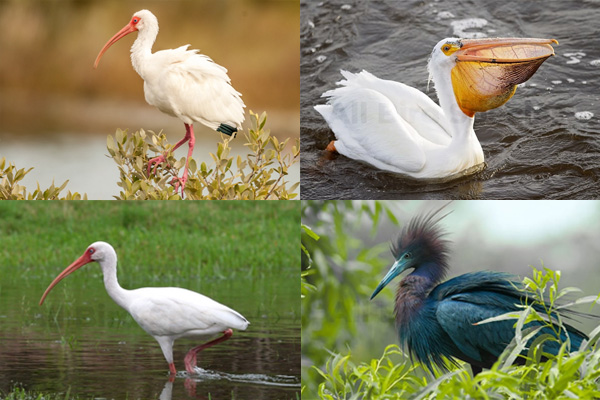Are Birds Just Flying Mammals in Disguise? The Great Debate
Birds and mammals belong to distinct classes in the animal kingdom, yet their similarities often spark intriguing discussions. Whether birds could be considered flying mammals involves examining their unique traits and evolutionary backgrounds.
Animal classification provides a framework for differentiating these two groups, including various levels such as classes, orders, and families. By analyzing the defining features of birds and mammals, we can uncover the fascinating connections that bridge these seemingly disparate animals.
Introduction to Are Birds Mammals or not?
The debate over whether birds merely fly mammals in disguise sparks curiosity among nature enthusiasts. This fascinating topic dives into the classification of animals and explores what truly sets birds apart from their mammalian counterparts.
Despite some similarities, birds belong to a distinct class within the animal kingdom. By examining their unique features, adaptations, and evolutionary backgrounds, we can better understand how these feathered creatures fit into our understanding of life on Earth.
Are Birds Mammals?
Birds are not classified as mammals. They belong to their own class, Aves, characterized by feathers, beaks, and laying hard-shelled eggs. On the other hand, mammals fall under the class Mammalia and have fur or hair along with mammary glands for nursing their young.
Despite some superficial similarities in behavior and physiology between birds and mammals, these differences are significant enough to distinguish them clearly within the animal kingdom. Understanding these classifications is essential for comprehending evolutionary relationships among species.

Are birds mammals? Here are the distinct features that classify the feathered animals.
Despite some similarities, birds are not mammals. They possess unique characteristics that set them apart. For instance, birds have feathers instead of fur and lay eggs with hard shells, a distinct reproductive trait.
Additionally, their skeletal structure is adapted for flight. Birds have lightweight bones and a keel on their breastbone to support powerful muscles for wing movement. These features highlight the evolutionary differences between birds and mammals, firmly placing them in separate classifications within the animal kingdom.
Animal Classification
Animal classification is a systematic way of organizing living organisms into categories based on shared characteristics. This system helps scientists and researchers understand the relationships between different species. The primary ranks include kingdom, phylum, class, order, family, genus, and species.
Each level of classification narrows down the similarities among animals. For instance, all mammals belong to the Mammalia class, while birds fall under Aves. These classifications help in studying biodiversity and evolutionary biology effectively.
Brief Guide To Animal Classification: Classes, Orders, Families, Species, Etc.
Animal classification is a systematic way to organize living organisms. It follows a hierarchical structure, starting with broad categories like Kingdom and Phylum, then narrowing down to Classes, Orders, Families, Genera, and finally Species. Each level helps to identify relationships among different animals.
For instance, all mammals belong to the Mammalia class, while birds fall under Aves. This classification reveals shared characteristics and evolutionary links between species. Understanding these categories aids in studying biodiversity and ecological roles across various habitats.
Bird and Mammal Comparison
Birds and mammals are both warm-blooded vertebrates, but they belong to different classes within the animal kingdom. Birds fall under the class Aves, characterized by feathers, beaks, and hollow bones that aid in flight. Mammals belong to the class Mammalia and are distinguished by features such as hair or fur and mammary glands for nursing their young.
While both groups have unique survival adaptations, their evolutionary paths diverged millions of years ago. This divergence has led to distinct physiological traits that define each class today.
Bird And Mammal Classification
Birds and mammals belong to distinct classes within the animal kingdom. Birds are classified under the class Aves, characterized by feathers, beaks, and hollow bones. They lay eggs with hard shells and possess unique respiratory systems allowing efficient oxygen exchange during flight.
Mammals fall under the class Mammalia. This group is defined by characteristics such as mammary glands, which produce milk for their young, hair or fur covering their bodies, and a more complex brain structure compared to other animals. Each classification highlights evolutionary adaptations specific to survival in various environments.
Birds Vs Mammals
Birds and mammals belong to distinct classes within the animal kingdom, each exhibiting unique traits. Birds are characterized by feathers, beaks, and the ability to lay eggs with hard shells. Their lightweight bones assist in flight, making them highly specialized for aerial living.
In contrast, mammals possess fur or hair and typically give birth to live young. They also produce milk through mammary glands to nourish their offspring. These fundamental differences highlight how diverse life can be on our planet despite some superficial similarities between these groups.
Similarities Between Birds and Mammals
Birds and mammals share several key similarities that highlight their evolutionary connections. Both groups are warm-blooded, allowing them to maintain a stable internal body temperature regardless of external conditions. This trait enables more active lifestyles and adaptability to various environments.
Additionally, both birds and mammals exhibit complex behaviors and social structures. They communicate through vocalizations or calls, displaying intelligence in their interactions. Parental care is another commonality; many species invest considerable time raising their young, ensuring the continuation of their respective species.
Differences Between Birds and Mammals
Birds and mammals exhibit several key differences in their biological makeup. Birds possess feathers, which are essential for flight and insulation, while mammals have fur or hair covering their bodies. The skeletal structures also differ; birds have a lightweight, hollow bone system allowing easier airborne movement.
Additionally, reproductive methods set them apart. Birds lay eggs with hard shells, whereas most mammals give birth to live young and nurse them with milk. These distinctions highlight the unique evolutionary paths of both groups within the animal kingdom.
Characteristics
Birds are characterized by feathers, which enable flight and provide insulation. Their lightweight bones contain air sacs, reducing body weight without sacrificing strength. Birds also possess a beak instead of teeth, adapted for their unique diets.
Mammals have distinct traits, such as mammary glands that produce milk to nurture offspring. They typically have fur or hair covering their bodies and three middle ear bones that aid in hearing. These characteristics create significant differences between these two fascinating groups of animals.
Bird Characteristics
Birds possess unique characteristics that distinguish them from other animals. They are warm-blooded vertebrates with feathers covering their bodies, which provide insulation and enable flight. Most species have lightweight skeletons featuring hollow bones that reduce overall body weight without sacrificing strength.
Additionally, birds lay hard-shelled eggs and have a specialized beak adapted to their feeding habits. Their highly efficient respiratory systems allow maximum oxygen intake during flight, making birds incredibly versatile in various environments around the world.
Mammal Characteristics
Mammals are characterized by several distinct features. They possess fur or hair, which provides insulation and helps regulate body temperature. Mammary glands are another defining trait, allowing females to nurse their young with milk.
Additionally, mammals have three middle ear bones that aid in hearing and a specialized jaw structure for chewing food. Most mammals give live birth, though there are exceptions, like monotremes. These traits collectively distinguish mammals from other animal classes, showcasing their unique adaptations to various environments.
Adaptations
Birds have evolved incredible adaptations for flight. Their lightweight skeletal structure, featuring hollow bones, minimizes weight while maintaining strength. The unique shape of their wings allows for various flight patterns, from gliding to rapid flapping.
Additionally, birds possess specialized muscles and a highly efficient respiratory system that supports high-energy demands during flight. Their feathers are crucial in aerodynamics and insulation, enabling them to soar through different environments easily. These remarkable adaptations showcase the evolutionary journey distinguishing birds within the animal kingdom.
Bird Adaptations For Flight
Birds possess unique adaptations that enable them to soar through the skies easily. Their lightweight, hollow bones reduce body mass without sacrificing strength. This skeletal structure is crucial for flight efficiency.
Feathers also play a vital role, providing both insulation and lift. Wing shape varies among species, optimizing airflow during different flight styles, from gliding to rapid flapping. Additionally, powerful chest muscles drive birds’ wings’ motion, allowing them to navigate various environments and effectively escape predators.
Bottom Line
The debate on whether birds are simply flying mammals in disguise reveals fascinating insights into the complexity of animal classification. While both groups share certain traits, they belong to distinctly different classes within the animal kingdom. Birds possess unique features like feathers and beaks, while mammals have fur, hair, and mammary glands.
Understanding these differences is crucial for appreciating the diversity of life forms around us. Each class has evolved remarkable adaptations that suit their environments and lifestyles. The journey through this topic clarifies misconceptions and highlights the wonders of evolution and biodiversity in our world today.
Why are you more likely to find birds at high altitudes than mammals?
Avians can adapt better to low oxygen levels and cold temperatures, making high-altitude survival easier than most mammals.
Read More Related Articles
- How to Tell If a Bird is Dead: Signs and Steps
- Birds That Start with Letter M
- Eagle Eggs: Fascinating Facts About Raptor Nests
- What Do Ducks Eat? 7 Things You Can Feed Ducks
- Is Birdwatching Good for Cats? Find Out Here
- Do Birds Eat Oats?
- Can Birds Eat Almonds?
Frequently Asked Questions
Are penguins birds or mammals?
Penguins are birds. They have feathers, lay eggs, and are adapted to swim rather than fly.
How does Pi regard birds and mammals that are not prey?
Pi respects and observes non-prey birds and mammals as part of the natural world, acknowledging their roles in the ecosystem.
Are bats birds or mammals?
Bats are mammals. They have fur, give birth to live young, and feed them with milk.
Are birds classified as mammals?
No, birds are not classified as mammals. They are classified as Aves, a separate class.
Are birds mammals or reptiles?
Birds are neither mammals nor reptiles; they are classified under the class Aves but evolved from reptilian ancestors.







